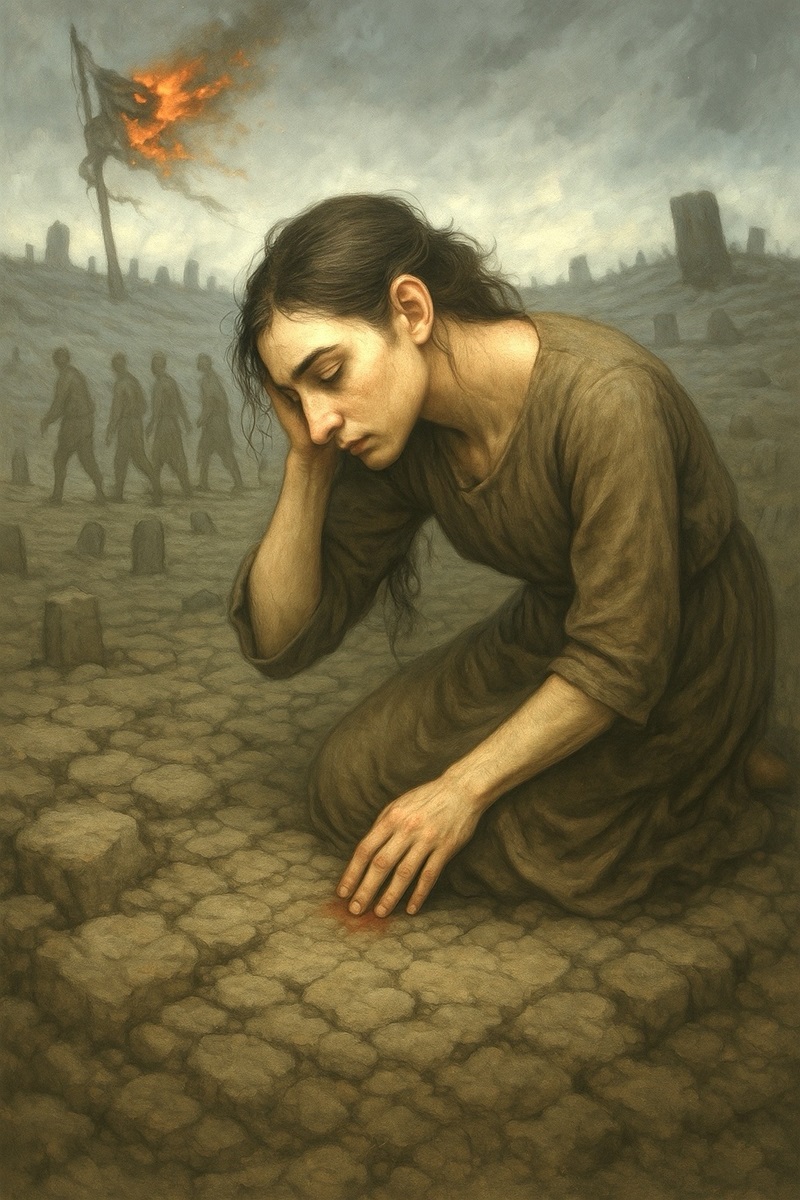她站在时间的断崖上,身后是燃烧的旗帜与沉默的墓碑,面前是一片无法标注的地图。有人说那叫“历史的正确之路”。
她低头,只看见脚下的石头刻着不同名字——胜利者、逃亡者、耕种者、叛徒——石头并不争吵,只在风中被沙粒慢慢抹去。她继续前行,因为路径从未明确,它总在脚步落下时才出现。
当一个文明试图通过刻在石头上的分类来定义历史时,它是否意识到,那些未被记录的身体,仍在地下持续行军。
She stands at the edge of time, behind her the burning flags and silent gravestones; before her, a map with no names. Some call it “the right side of history.”
She looks down and sees only stones beneath her feet, carved with different names—victor, fugitive, farmer, traitor—the stones do not argue, they are slowly erased by wind and sand. She walks on, for the path is never clear—it appears only with each step taken.
When a civilization tries to define history by the labels carved into stone, does it realize that the unrecorded bodies are still marching underground?

